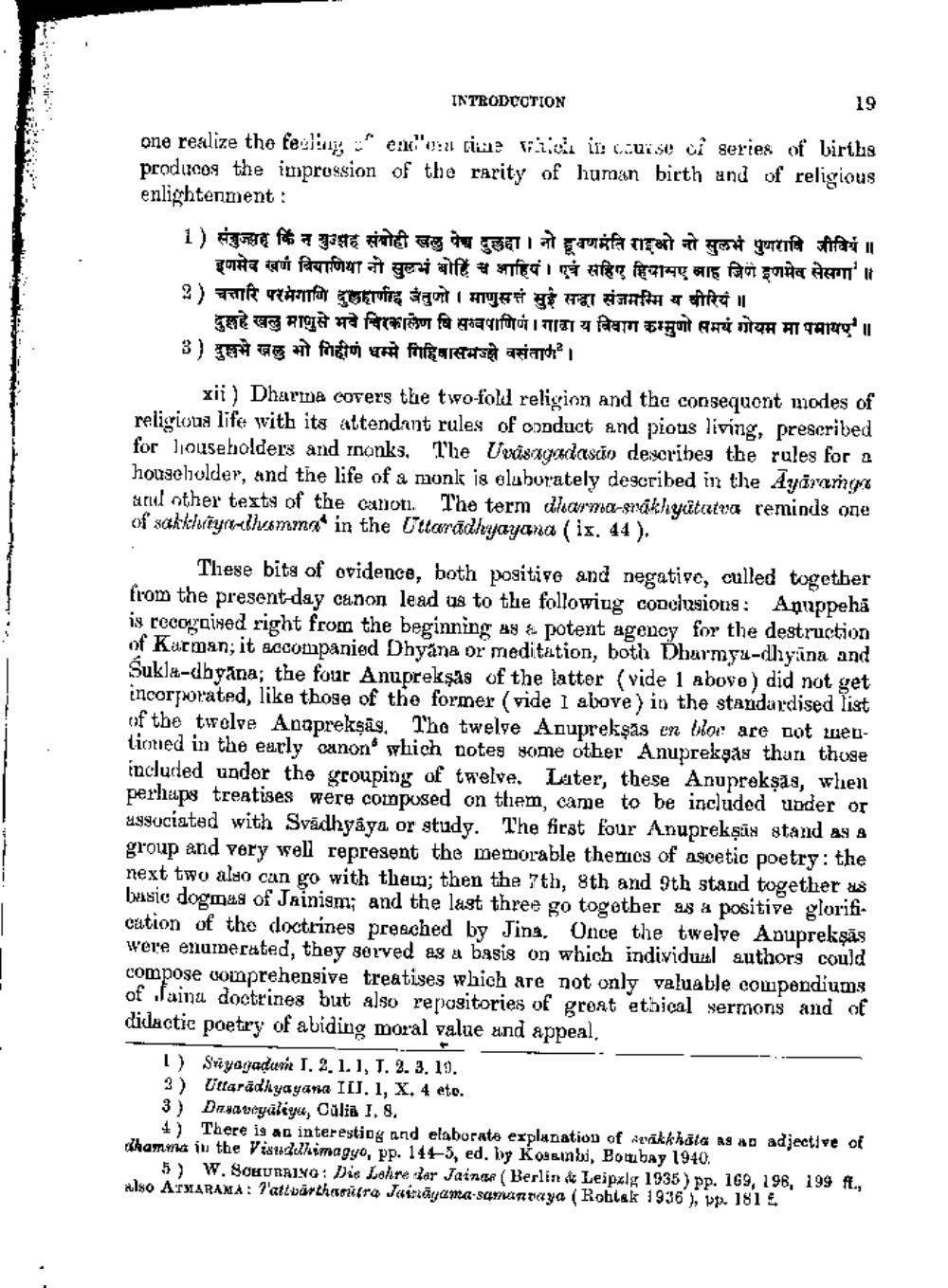________________
INTRODCCTION
19
one realize the fen " enx"o: clue in course ci series of births produces the improssion of the rarity of human birth and of religious enlightenment :
1) संजुजाह किं न शुलह संयोही खलु पेच दुलहा । नो एवणमंति राइनो नो सुलभ पुणरावि जीवियं ।। __इणमेव खणं विवाणिया नो सुलभं बोहिं च आहियं । एवं सहिए हियामए माह जिणे इणमेव सेसगा। 2) चत्तारि परमेगाणि दुलहाणीद जैतुणो । माणुसत्तं सुई सद्धा संजमम्मि य पीरियं ॥
दुलहे खलु माणुसे भवे चिरकालेण वि सम्वपाणिण । गाठाय विवाग कम्मुणो समयं गोयम मा पमायए'। 3) दुलो खलु भो गिहीणं धम्मे गिहिवासमझे वसंताण।
xii) Dharna covers the two-fold religion and the consequent modes of religious life with its attendant rules of conduct and pious living, prescribed for llouseholders and inonks, The Urāsagadascio describes the rules for 2 householder, and the life of a monk is elaborately described in the Ayiranga arul other texts of the canoti. The term dharma-sakhy itatoa reminds one of sahtliynalommg in the Uttaradhyayana (ix. 44 ),
These bits of ovidence, both positive and negative, culled together from the present-day canon lead us to the following conclusions: Anuppehā is recognised right from the beginning as a potent agency for the destruction of Kurman; it accompanied Dhyana or meditation, both Dharmy-dhyāna and Suklu-dbgana; the four Anuprekşās of the latter (vide 1 above) did not get incorporated, like those of the former (vide 1 above) in the standardised list of the twelve Angpreksās. The twelve Anupreksas en bloe are not webtioned in the early canon which notes some other Anuprekşan than those included under the grouping of twelve. Later, these Anupreksas, when perhaps treatises were composed on them, came to be included under or ussociated with Svädhyâya or study. The first four Anuprekşās stand as a group and very well represent the memorable themes of ascetic poetry: the next two also can go with them; then the 7th, 8th and 9th stand together as busic dogmus of Jainism; and the last three go together as a positive glorification of the doctrines preached by Jina. Once the twelve Anuprekşās were enumerated, they served as a basis on which individual authors could compose comprehensive treatises which are not only valuable compendiums of Jaina doctrines but also repositories of great ethical sermons and of didactic poetry of abiding moral value and appeal,
1) Sriyajadun I.2.1.1, 1. 2. 3. 19. 3) Uttaradhyayana IIJ. 1, X. 4 eto. 3) Dasaveyaltys, Calia I. 8.
4) There is an interesting and elaborata explanation of Arākkhäls as an adjective of chama in the Vistdallimagyo, pp. 1475, ed. by Koosindi, Botubay 1940.
5) W. SUURAING: Die Lohne Bar Jain (Berlin Leipzig 1935) pp. 169, 198, 199 ft., also ATXARAMA: l'attbartharura Jatrayama-samattaya (Roblek 1936), p. 181




